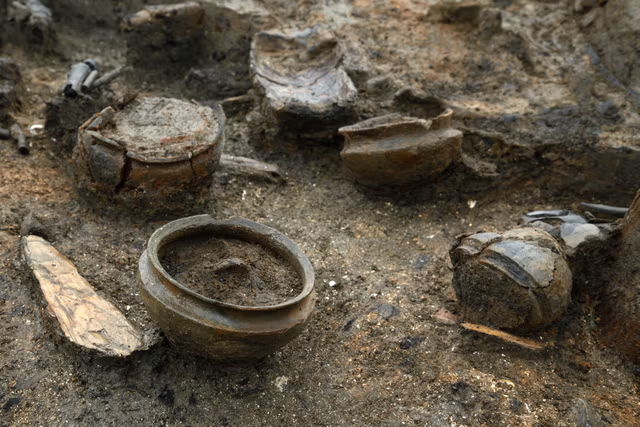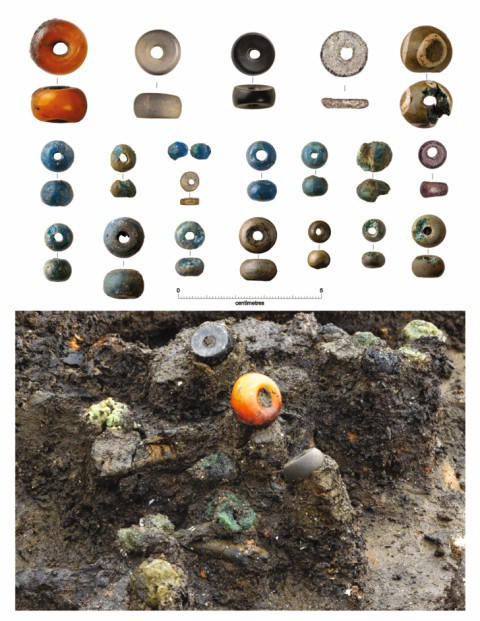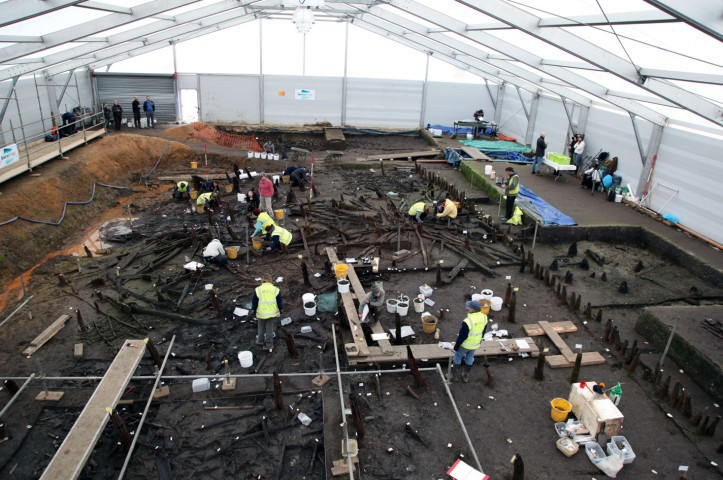
People only lived in the ‘UK’s Pompeii’ for a year before it burned down, but the remaining artefacts are remarkably well preserved.
A new study provided a greater insight into the lives of people who lived at what is now Must Farm in Peterborough over 3,000 years ago.
The village was made up of 10 circular wooden houses on stilts above a river, and could potentially have had 50 to 60 people living there, the researchers said.
bin for tools.
They also said the inhabitants lived a life of ‘cosy domesticity’ and dined on honey-glazed venison and meaty porridge.
The researchers, from Cambridge Archaeological Unit (CAU), excavated Must Farm nearly a decade ago and revealed what life would have been like for the inhabitants living in the village just as the Bronze Age was coming to a close.

Must Farm’s thousands of artefacts also include a pottery bowl with the fingermarks of its creator imprinted in the clay that was found still holding its final meal.
Chemical analysis reveals traces of a wheat porridge mixed with animal fats – which the researchers say could be goat or red deer.
They even found a broken wooden spatula used for stirring which was still resting against the inside of the bowl.
Project archaeologist Dr Chris Wakefield at CAU said: ‘The site is providing us with hints of recipes for Bronze Age breakfasts and roast dinners.
‘Chemical analyses of the bowls and jars showed traces of honey along with ruminant meats such as deer, suggesting these ingredients were combined to create a form of prehistoric honey-glazed venison.
‘It appears the occupants saved their meat juices to use as toppings for porridge.’

What is Must Farm?
Dr Wakefield said the site was ‘an amazing time capsule’, as it provides a unique indicator for the villages, home interiors and overall domesticity of those who lived in the area some eight centuries before Romans set foot on British shores.
Environmental analysis shows vegetation in the river helped to cushion the material falling from the structures, preventing damage.
The items landed directly beneath where they had been stored in the houses, which gave archaeologists a direct insight into how the roundhouses were used.
A combination of charring and waterlogging caused thousands of objects to survive, including almost 200 wooden artefacts, more than 150 fibre and textile items, 128 pottery vessels and some 90 pieces of metalwork.
Some of the objects from the dig will be displayed in an exhibition at Peterborough Museum and Art Gallery from April 27.
, both available online.
Vivid Bulletin's News Updates newsletter


Post a Comment
0Comments